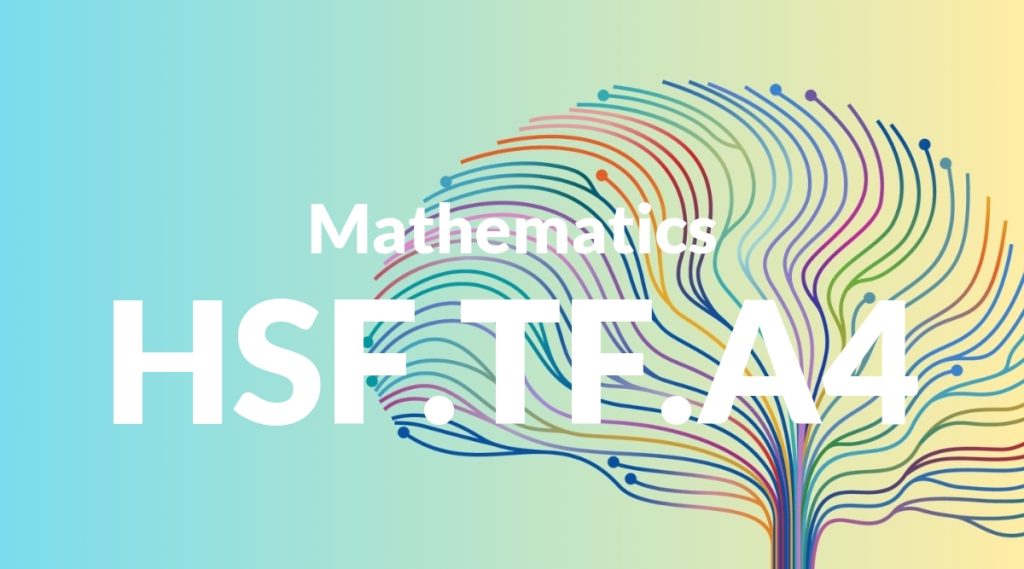Standard: HSF.TF.A4 – (+) Use the unit circle to explain symmetry (odd and even) and periodicity of trigonometric functions.
Grade level: High School: Functions
Subject: Mathematics
Domain: Trigonometric Functions
Teacher Overview
This standard focuses on using the unit circle to understand the symmetry and periodicity of trigonometric functions. Mastery of this concept is critical for students as it lays the groundwork for more advanced topics in calculus and engineering. Understanding symmetry helps in simplifying complex problems, while periodicity is essential for modeling real-world phenomena. Students should be comfortable with the unit circle, basic trigonometric functions, and the concepts of symmetry and periodicity. They should also be able to recognize and graph sine, cosine, and tangent functions.
Mastering this standard prepares students for advanced topics in calculus, such as the integration and differentiation of trigonometric functions. It also equips them with the skills to model and analyze periodic phenomena in various fields, including engineering and physics.
Common Misconception 1
A common misconception is that all trigonometric functions are either odd or even. This is incorrect because the classification of a function as odd or even depends on its specific properties. For example, sine is an odd function, while cosine is an even function.
Intervention 1
To address this misconception, use graphing tools to visually demonstrate the symmetry of sine and cosine functions. Show how sine reflects over the origin (odd function) and cosine reflects over the y-axis (even function).
Common Misconception 2
Another misconception is that all trigonometric functions have the same period. This is not true; for instance, sine and cosine have a period of 2π, while tangent has a period of π.
Intervention 2
Provide practice problems that require students to calculate the periods of different trigonometric functions. Use real-world examples, such as sound waves and tides, to illustrate the concept of periodicity.
Prerequisite Knowledge
Students should have a solid understanding of basic trigonometric functions, the unit circle, and the properties of sine, cosine, and tangent functions. They should also be familiar with the concepts of symmetry and periodicity in mathematics.
Subsequent Knowledge
After mastering this standard, students will be able to apply their understanding of trigonometric functions to more complex problems in calculus, such as integration and differentiation of trigonometric functions. They will also be prepared to explore Fourier series and other advanced topics in mathematics and engineering.
Instructional Activities
- Graphing trigonometric functions to identify symmetry and periodicity
- Using the unit circle to derive the properties of sine, cosine, and tangent
- Solving real-world problems involving periodic phenomena
- Interactive simulations to visualize the unit circle and trigonometric functions
- Group activities to compare and contrast the properties of different trigonometric functions




